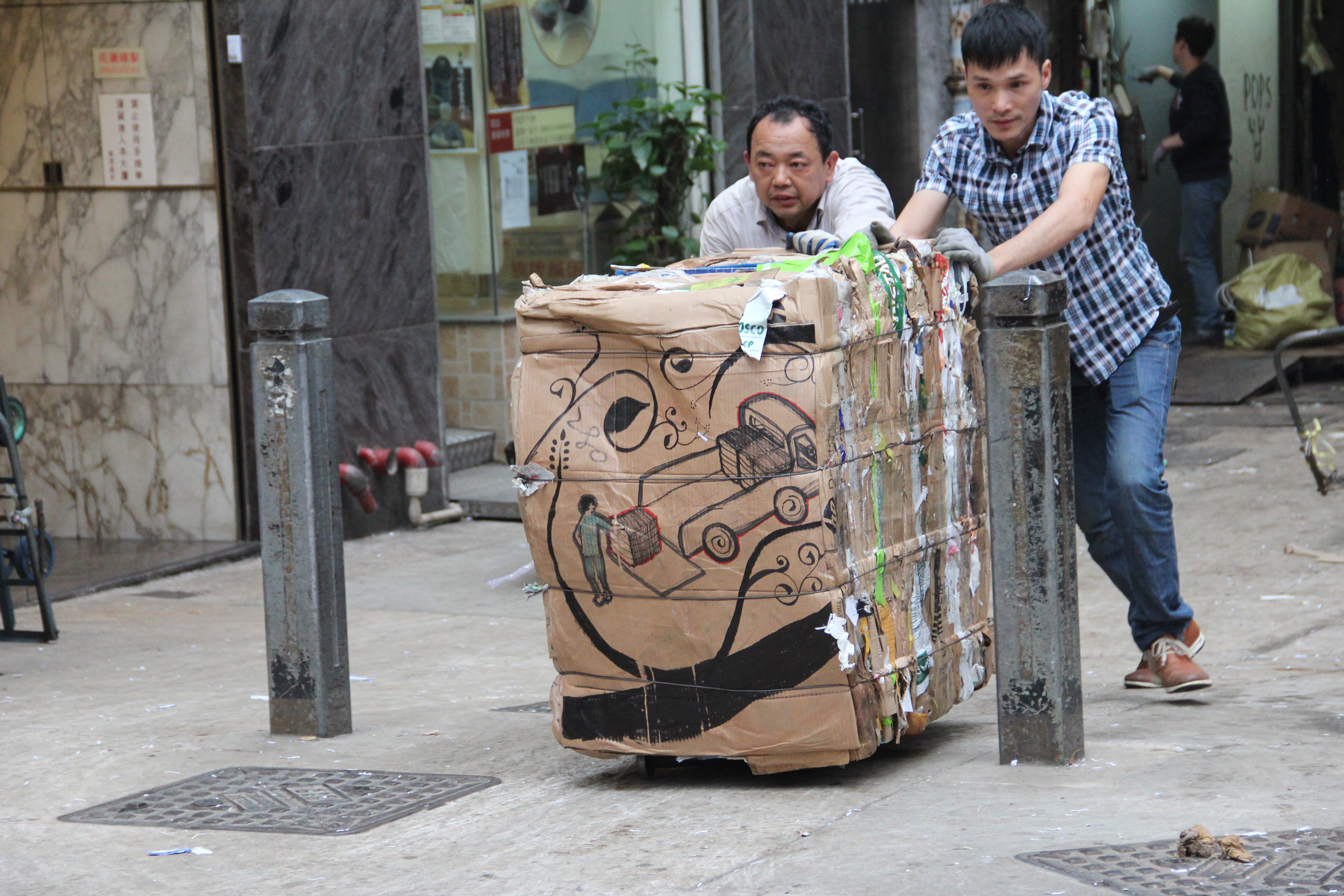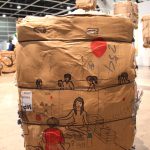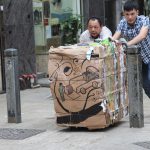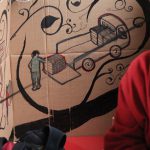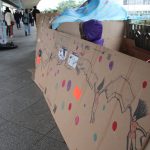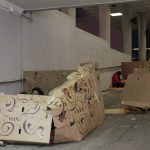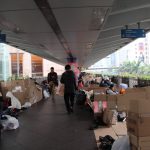Period
2014
Proposed by
Alia Swastika
Location
Hong Kong
About the project
Trade, Trace, Transit is using public interventions with mobile ethnography. Trade, Trace, Transit follows not people but waste-cardboard, as it moves from shops to waste collectors, recycling agents, port handlers and recycling factories. I stage public interventions with waste-cardboard en route.
Trade, Trace, Transit begins around Hong Kong’s Central station, where mostly-women Filipino Migrant Workers gather on weekends, building single-use ‘houses’ with waste-cardboard. By following waste-cardboard extensively and designating it as my work material, I became a stakeholder in the informal trade route, and found that covert Filipino Migrant Workers groups have been acting as illicit middle-women among waste collectors, fellow W and recycling agents, to meet Filipino Migrant Workers’ needs for ‘houses’ material and boost their low wage. This everyday resistance multiplies waste-cardboard nominal and social value in weekly trade cycles.
To make visible this integral node in the global recycling industry, I drew the route’s scenes on ‘houses’ walls to give waste-cardboard (which changes shape en route but retains its surface markings) visibility. When marked waste-cardboards go to the recycling agents and are amassed into 100s of kgs bales, I intervene in the assembly so my marked waste-cardboards are on the bales’ surfaces.
All bales enter the port on trucks that pass the Art Basel Hong Kong venue. Seizing Art Basel Hong Kong’s global visibility, I rerouted 5 tons of marked waste-cardboard bales as installation, plus a film, in Art Basel Hong Kong’s curated sections, and held a public Art Basel Hong Kong roundtable with stakeholders’ representatives.
As an artwork, Trade, Trace, Transit has now traverse value systems. Meantime, China slashed global waste imports, and a Filipino Migrant Workers group leader recovers from surgery. A longer film will reveal these local acts in a global industry, while transdisciplinary research dissects the novel methodology of Trade, Trace, Transit. Trade, Trace, Transit’s partners are Australia Council for the Arts, Osage Gallery, Asia Art Archive, Gothenburg University.
External links
About the artist
My sociopolitical concerns, mainly of cross-border (im)mobility, stem from experiencing marginalization in Indonesia as a 7th generation migrant and 1965 survivor family member. Showing internationally since 2000, I moved to Australia as a skilled migrant in 2003. Since then I use iconic things of bordering (e.g. passports) to stimulate public discussions on borders. Since 2014 I engage with things that link humans in everyday life’s social sphere, so as to make these connections publicly visible.
